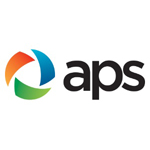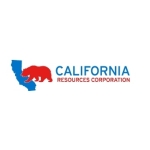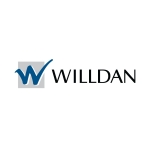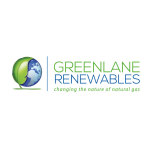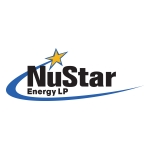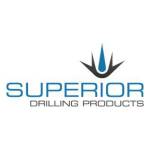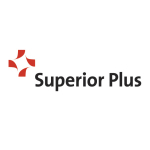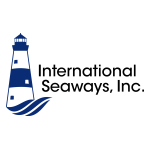NEW YORK--(BUSINESS WIRE)--International Seaways, Inc. (NYSE: INSW) (the “Company” or “INSW”), one of the largest tanker companies worldwide providing energy transportation services for crude oil and petroleum products in International Flag markets, today reported results for the fourth quarter and full year 2020.

Highlights
-
Net loss for the twelve months ended December 31, 2020 was $5.5 million, or $0.20 per diluted share. Net loss for 2020 reflects the impact of impairments and loss on sale of vessels of $100.1 million and various expenses related to refinancing of $14.5 million, and a non-cash deferred tax provision of $16.4 million recorded as a reduction of equity in results of the FSO (Floating Storage Offloading) joint ventures, principally related to the extension of their service contracts. Net income excluding these items would have been $125.2 million, or $4.39 per diluted share.
-
Net loss for the fourth quarter was $116.9 million, or $4.18 per diluted share, compared to net income of $15.9 million, or $0.54 per diluted share, in the fourth quarter of 2019. Net loss for the current quarter reflects the impact of vessel impairment charges of $85.9 million and the aforementioned non-cash $16.4 million tax provision. Net loss excluding these items would have been $14.6 million, or $0.52 per diluted share.
-
Signed 10-year extensions to our service contracts for our two FSO joint ventures, which are expected to generate in excess of $322 million of contract revenues for the Company over the additional 10-year extension periods.
-
Time charter equivalent (TCE) revenues(A) for the fourth quarter were $53.0 million, compared to $117.6 million for the fourth quarter of 2019.
-
Adjusted EBITDA(B) for the fourth quarter was a loss of $5.0 million, compared to $72.2 million for the fourth quarter of 2019. Full year Adjusted EBITDA was $220.1 million compared to $164.7 million for fiscal 2019. The amounts for Adjusted EBITDA for the 2020 periods are without consideration of any adjustment for the $16.4 million non-cash deferred tax provision recorded by the FSO joint ventures.
-
Cash(C) was $215.7 million as of December 31, 2020; total liquidity was $255.7 million, including $40.0 million of undrawn revolver.
-
Paid a regular quarterly cash dividend of $0.06 per share in December 2020 and announced a quarterly cash dividend of $0.06 per share payable in March 2021.
-
Sold and delivered a 2002-built VLCC, Seaways Mulan, a 2003-built VLCC, Seaways Rosalyn, and a 2001-built Aframax, Seaways Fran.
-
Subsequent to the end of the quarter, announced contract to build three dual fuel LNG VLCCs at DSME shipyard in South Korea with seven-year time charters to Shell commencing at delivery in 2023.
“2020 was a challenging and volatile year for the tanker market, but also one in which we achieved solid results, generating a record $220 million of adjusted EBITDA, increasing our cash position to $216 million, and taking steps aimed at unlocking shareholder value by initiating a cash dividend and repurchasing approximately 5% of our outstanding shares,” said Lois K. Zabrocky, International Seaways’ President and CEO. “Our earnings power during the full year was driven by the performance of our sizeable fleet and our success executing four very favorable VLCC time charters early in 2020, enabling us to optimize revenue later in the year when oil inventory destocking adversely impacted tanker demand. Importantly, in addition to continuing to generate strong cash flows from two of these time charters into 2021, the extensions of our FSO joint venture contracts in the fourth quarter bolster our contracted cash flows through 2032. Over the last three years, the FSO joint ventures have returned over $54 million in cash to Seaways, excluding distributions related to refinancings.”
Ms. Zabrocky continued, “Consistent with our focus on accretive capital allocation, we are excited to have agreed to build three LNG dual-fuel VLCCs for delivery in 2023, enabling us to achieve a number of critical strategic objectives. Adding these vessels to our fleet on seven-year time charters to a market leading counterparty in Shell both allows us access to very competitive financing as we renew our fleet at attractive levels and provides strong, stable cash flows with added upside due to profit sharing above the base rate. Additionally, we expect these tankers to be well suited to adhere to future environmental regulation throughout their life. These ships meet not just today’s IMO Energy Efficiency Design Index (“EEDI”) but also beat the 2025 Phase III EEDI targets by about eight percent. Their significant environmental benefits, including substantially reducing our carbon footprint, are in keeping with Seaways’ commitment to ESG-focused corporate citizenship, and we are proud to continue to be at the forefront of sustainability initiatives in the maritime sector.”
Jeff Pribor, the Company’s CFO, added, “2020 was an important year for Seaways, as we successfully completed our sustainability-linked refinancing, which reduced our average interest rate by 3.5 percentage points and our annual interest expense by $25 million, strengthened our capital structure, and enabled us to begin returning capital to shareholders. Given our balance sheet strength, we believe we are well positioned to continue to allocate capital to create long-term shareholder value. Specifically, in addition to utilizing our strong cash flow to further prepay debt, we were able to execute on our share repurchase program and pay $0.06 per share in quarterly dividends. At the same time, we grew our total liquidity to $256 million, and our net loan to value of 32.7% remains one of the lowest among our tanker peers.”
Fourth Quarter 2020 Results
Net loss for the fourth quarter was $116.9 million, or $4.18 per diluted share, compared to net income of $15.9 million, or $0.54 per diluted share, for the fourth quarter of 2019. The decline in the fourth quarter primarily reflects lower TCE revenues and a $85.9 million loss on disposal of vessels and other property, including impairments.
Consolidated TCE revenues for the fourth quarter were $53.0 million, compared to $117.6 million for the fourth quarter of 2019. Shipping revenues for the fourth quarter were $56.7 million, compared to $124.0 million for the fourth quarter of 2019.
In the fourth quarter of 2020, the Company recorded an impairment charge of $85.9 million for one VLCC, one Aframax, two LR1s and four MRs to write-down their carrying values to their estimated fair values at December 31, 2020. Interest expense decreased by $6.5 million for the fourth quarter of 2020 compared to the fourth quarter of 2019 as a result of lower average outstanding debt balances in the current year periods compared to the 2019 periods and lower average LIBOR rates during 2020 compared with 2019. The lower average debt balance was principally attributable to $110 million in principal prepayments on the 2017 Term Loan Facility during the second half of 2019, the $40 million repayment of the Transition Loan Facility in August 2020 and the use of cash in the January 2020 refinancing to further reduce outstanding debt balances.
Adjusted EBITDA for the fourth quarter was a loss of $5.0 million, compared to $72.2 million for the fourth quarter of 2019.
Crude Tankers
TCE revenues for the Crude Tankers segment were $44.0 million for the fourth quarter compared to $92.5 million for the fourth quarter of 2019. This decrease primarily resulted from the impact of lower average rates in the VLCC, Suezmax, Aframax and Panamax sectors, with average spot earnings declining to approximately $17,500, $10,400, $8,100 and $9,500 per day, respectively, aggregating approximately $41.3 million. Shipping revenues for the Crude Tankers segment were $47.0 million for the fourth quarter compared to $98.6 million for the fourth quarter of 2019.
Product Carriers
TCE revenues for the Product Carriers segment were $8.9 million for the fourth quarter, compared to $25.1 million for the fourth quarter of 2019. Lower period-over-period average daily blended rates earned by the LR2, LR1 and MR fleets, with average spot rates falling to approximately $16,800, $14,900 and $10,000 per day, respectively, accounted for a decrease in TCE revenues of approximately $6.3 million. In addition, fewer revenue days in the LR1 fleet during the last quarter of 2020 due to vessels being off-hire for scheduled drydocks and a decrease in the MR fleet primarily resulting from the redeliveries of three MRs between March 2020 and July 2020 contributed to an aggregate decrease in TCE revenues of approximately $9.9 million. Shipping revenues for the Product Carriers segment were $9.7 million for the fourth quarter, compared to $25.3 million for the fourth quarter of 2019.
Full Year 2020 Results
Net loss for the full year ended December 31, 2020 was $5.5 million, or $(0.20) per diluted share, compared with net loss of $0.8 million, or $(0.03) per diluted share, for the full year ended December 31, 2019. During 2020, income from vessel operations decreased by $15.3 million to $39.9 million from $55.2 million in 2019. An increase of $99.8 million in losses on disposals of vessels and other property, including impairments, in the current year drove such decrease. Offsetting these non-cash charges to a large extent were significantly higher TCE revenues, and lower charter hire expenses.
Equity in income of affiliated companies decreased by $7.1 million to $4.1 million from $11.2 million in 2019. This decrease was principally attributable to decreases in earnings from the two FSO joint ventures of $15.3 million, partially offset by the impact of the Company no longer having an interest in the LNG joint venture, which was sold in October 2019. In 2019, the Company recognized a net loss of $8.2 million related to the LNG joint venture. The decrease in earnings from the FSO joint venture reflects the Company’s share of the non-cash deferred tax provision recorded in the fourth quarter of 2020, which was primarily driven by the execution of 10-year extensions on each of the joint venture’s existing service contracts in October 2020. The deferred tax provision relates to temporary differences between the financial reporting and tax basis of the FSO Vessels, which are scheduled to reverse over the period from the expiry of the current service contracts in 2022 through the expiry of the extended contracts in 2032.
Other expense was $12.8 million for the year ended December 31, 2020 compared with $0.9 million for the year ended December 31, 2019. The current year’s expense includes (i) prepayment fees of $1.0 million related to the 10.75% Subordinated Notes and a write-off of $12.5 million of deferred financing costs associated with the payoff of the 2017 Term Loan, ABN Term Loan Facility, and the 10.75% Subordinated Notes during the first quarter of 2020, and (ii) prepayment fees of $0.2 million and a write-off of $0.6 million of deferred financing costs associated with the payoff of the Transition Term Loan Facility in August 2020. Similarly, the 2019 expense includes a 1% prepayment fee of $1.1 million and the write-off of $3.6 million of deferred financing costs associated with the $110 million principal prepayments on the 2017 Debt Facilities.
Interest expense was $36.7 million in 2020, compared with $66.3 million in 2019. The decrease was a result of lower average outstanding debt balances in 2020 compared with 2019, and lower average margins and interest rates on the refinanced portion of debt entered into by the Company during the first quarter of 2020, and lower average LIBOR rates during 2020 compared with 2019.
Consolidated TCE revenues for the full year ended December 31, 2020 were $402.0 million, compared to $339.9 million for the full year ended December 31, 2019. Shipping revenues for the full year ended December 31, 2020 were $421.6 million compared to $366.2 million for the full year ended December 31, 2019.
Adjusted EBITDA for the full year ended December 31, 2020 was $220.1 million, compared to $164.7 million for the full year ended December 31, 2019.
Crude Tankers
TCE revenues for the Crude Tankers segment were $318.6 million for the full year ended December 31, 2020, compared to $259.5 million for the full year ended December 31, 2019. This increase resulted primarily from the impact of significantly higher average blended rates in the VLCC, Suezmax and Panamax sectors, with average spot rates increasing to approximately $46,900, $32,500 and $24,800 per day, respectively. The VLCC fleet accounted for $78.6 million of the total increase. Partially offsetting the rates-based revenue increase was the impact of a 505-day decrease in VLCC and Panamax revenue days, aggregating $10.0 million, and a $19.8 million decrease in revenue in the Lightering business in 2020. The decrease in Lightering revenue was offset by a decrease of charter hire expense of $20.9 million. The decrease in VLCC and Panamax revenue days resulted primarily from a 93-day and 325-day increase in drydock days for the VLCC and Panamax fleets, respectively, during the year for scrubber installations on the VLCCs and for regularly scheduled drydocks on the Panamaxes, and also reflects the sales of a 2003-built VLCC and a 2002-built VLCC during November and December 2020, respectively.
Shipping revenues for the Crude Tankers segment were $334.8 million for the full year ended December 31, 2020, compared to $285.4 million for the full year ended December 31, 2019.
Product Carriers
TCE revenues for the Product Carriers segment were $83.4 million for the full year ended December 31, 2020, compared to $80.4 million for the full year ended December 31, 2019. This increase was primarily attributable to higher average daily blended rates earned by the LR1, LR2 and MR fleets in 2020, with average spot rates increasing to approximately $25,700, $28,200 and $16,400 per day, respectively, aggregating approximately $15.6 million. Also contributing to the increase was a days-based increase of $1.9 million. This increase was attributable to additional LR1 revenue days, as a result of the entry into a two-year time charter-in of a 2006-built LR1 in August 2019 and the purchase of a 2009-built LR1 that was delivered to the Company in February 2020, partially offset by 226 more drydock days in the current year and the redelivery of one six-month time chartered-in LR1 to its owner in November 2019. These increases were largely offset by a 1,226-day decrease in MR revenue days arising from the redelivery of four time chartered-in MRs to their owners between the third quarter of 2019 and July 2020 and the sales of two 2004-built MRs between June and July 2019.
Shipping revenues for the Product Carriers segment were $86.9 million for the full year ended December 31, 2020, compared to $80.8 million for the full year ended December 31, 2019.
Constructing Three Dual Fuel VLCC Newbuildings
Subsequent to the end of the quarter, the Company contracted to build three dual fuel LNG VLCCs at DSME shipyard in South Korea. The three ships, upon delivery, will be time chartered to Shell for a period of seven years at a rate that consists of a floor rate plus profit sharing.
Share Repurchases
During the fourth quarter, the Board of Directors increased the share repurchase program authorization to $50 million. No shares were acquired under the repurchase program in the quarter.
Payment of Regular Cash Dividend
The Company’s Board of Directors declared a regular quarterly cash dividend of $0.06 per share of common stock on February 23, 2021. The dividend will be paid on March 26, 2021 to shareholders of record at the close of business on March 11, 2021.
Vessel Sales
The Company sold a 2002-built VLCC, Seaways Mulan, a 2003-built VLCC, Seaways Rosalyn, and a 2001-built Aframax, Seaways Fran, all of which were delivered to buyers during the fourth quarter.
10-Year Contract Extensions for FSO Joint Venture
During the quarter, the FSO Joint Venture signed a 10-year extension on each of the existing service contracts with North Oil Company (“NOC”), relating to the two FSO service vessels. The extensions will commence in direct continuation of the existing contracts, which were originally scheduled to expire during the third quarter of 2022.
Conference Call
The Company will host a conference call to discuss its fourth quarter 2020 results at 9:00 a.m. Eastern Time (“ET”) on Friday, March 12, 2021. To access the call, participants should dial (855) 940-9471 for domestic callers and (412) 317-5211 for international callers. Please dial in ten minutes prior to the start of the call. A live webcast of the conference call will be available from the Investor Relations section of the Company’s website at www.intlseas.com.
An audio replay of the conference call will be available starting at 12:00 p.m. ET on Friday, March 12, 2021 through 11:59 p.m. ET on Friday, March 19, 2021 by dialing (877) 344-7529 for domestic callers and (412) 317-0088 for international callers, and entering Access Code 10152888.
About International Seaways, Inc.
International Seaways, Inc. (NYSE: INSW) is one of the largest tanker companies worldwide providing energy transportation services for crude oil and petroleum products in International Flag markets. International Seaways owns and operates a fleet of 36 vessels, including 11 VLCCs, two Suezmaxes, four Aframaxes/LR2s, 13 Panamaxes/LR1s and 4 MR tankers. Through joint ventures, it has ownership interests in two floating storage and offloading service vessels. International Seaways has an experienced team committed to the very best operating practices and the highest levels of customer service and operational efficiency. International Seaways is headquartered in New York City, NY. Additional information is available at https://www.intlseas.com.
Forward-Looking Statements
This release contains forward-looking statements. In addition, the Company may make or approve certain statements in future filings with the Securities and Exchange Commission (SEC), in press releases, or in oral or written presentations by representatives of the Company. All statements other than statements of historical facts should be considered forward-looking statements. These matters or statements may relate to the Company’s plans to issue dividends, its prospects, including statements regarding vessel acquisitions, trends in the tanker markets, and possibilities of strategic alliances and investments. Forward-looking statements are based on the Company’s current plans, estimates and projections, and are subject to change based on a number of factors. Investors should carefully consider the risk factors outlined in more detail in the Annual Report on Form 10-K for 2020 for the Company, and in similar sections of other filings made by the Company with the SEC from time to time. The Company assumes no obligation to update or revise any forward-looking statements. Forward-looking statements and written and oral forward-looking statements attributable to the Company or its representatives after the date of this release are qualified in their entirety by the cautionary statements contained in this paragraph and in other reports previously or hereafter filed by the Company with the SEC.
Category: Earnings
|
|
|
|
|
|
|
|
|
|
|
|
|
|
Consolidated Statements of Operations
|
($ in thousands, except per share amounts)
|
|
|
|
Three Months Ended
|
|
|
Fiscal Year Ended
|
|
|
|
|
December 31,
|
|
|
December 31,
|
|
|
|
|
2020
|
|
|
2019
|
|
|
2020
|
|
|
2019
|
|
|
|
|
(Unaudited)
|
|
|
(Unaudited)
|
|
|
|
|
|
|
|
Shipping Revenues:
|
|
|
|
|
|
|
|
|
|
|
|
|
|
Pool revenues
|
|
$
|
22,495
|
|
$
|
95,427
|
|
$
|
272,980
|
|
$
|
254,055
|
|
Time and bareboat charter revenues
|
|
|
22,166
|
|
|
7,926
|
|
|
88,719
|
|
|
27,625
|
|
Voyage charter revenues
|
|
|
12,042
|
|
|
20,669
|
|
|
59,949
|
|
|
84,504
|
|
Total Shipping Revenues
|
|
|
56,703
|
|
|
124,022
|
|
|
421,648
|
|
|
366,184
|
|
|
|
|
|
|
|
|
|
|
|
|
|
|
|
Operating Expenses:
|
|
|
|
|
|
|
|
|
|
|
|
|
|
Voyage expenses
|
|
|
3,750
|
|
|
6,427
|
|
|
19,643
|
|
|
26,265
|
|
Vessel expenses
|
|
|
33,634
|
|
|
31,571
|
|
|
128,373
|
|
|
123,205
|
|
Charter hire expenses
|
|
|
5,901
|
|
|
12,913
|
|
|
30,114
|
|
|
57,512
|
|
Depreciation and amortization
|
|
|
18,182
|
|
|
18,945
|
|
|
74,343
|
|
|
75,653
|
|
General and administrative
|
|
|
7,497
|
|
|
7,279
|
|
|
29,047
|
|
|
26,798
|
|
Provision for credit losses, net
|
|
|
9
|
|
|
(14)
|
|
|
(71)
|
|
|
1,245
|
|
Third-party debt modification fees
|
|
|
-
|
|
|
-
|
|
|
232
|
|
|
30
|
|
Loss on disposal of vessels and other property,
|
|
|
|
|
|
|
|
|
|
|
|
|
|
including impairments
|
|
|
85,923
|
|
|
280
|
|
|
100,087
|
|
|
308
|
|
Total operating expenses
|
|
|
154,896
|
|
|
77,401
|
|
|
381,768
|
|
|
311,016
|
|
(Loss)/income from vessel operations
|
|
|
(98,193)
|
|
|
46,621
|
|
|
39,880
|
|
|
55,168
|
|
Equity in (loss)/income of affiliated companies
|
|
|
(11,553)
|
|
|
(13,346)
|
|
|
4,119
|
|
|
11,213
|
|
Operating (loss)/income
|
|
|
(109,746)
|
|
|
33,275
|
|
|
43,999
|
|
|
66,381
|
|
Other income/(expense)
|
|
|
680
|
|
|
(3,102)
|
|
|
(12,817)
|
|
|
(943)
|
|
(Loss)/income before interest expense and income taxes
|
|
|
(109,066)
|
|
|
30,173
|
|
|
31,182
|
|
|
65,438
|
|
Interest expense
|
|
|
(7,823)
|
|
|
(14,281)
|
|
|
(36,712)
|
|
|
(66,267)
|
|
(Loss)/income before income taxes
|
|
|
(116,889)
|
|
|
15,892
|
|
|
(5,530)
|
|
|
(829)
|
|
Income tax provision
|
|
|
-
|
|
|
(1)
|
|
|
(1)
|
|
|
(1)
|
|
Net (Loss)/income
|
|
$
|
(116,889)
|
|
$
|
15,891
|
|
$
|
(5,531)
|
|
$
|
(830)
|
|
|
|
|
|
|
|
|
|
|
|
|
|
|
|
Weighted Average Number of Common Shares Outstanding:
|
|
|
|
|
|
|
|
|
|
|
|
|
|
Basic and diluted
|
|
|
27,941,519
|
|
|
29,250,103
|
|
|
28,372,375
|
|
|
29,225,483
|
|
|
|
|
|
|
|
|
|
|
|
|
|
|
|
|
|
|
|
|
|
|
|
|
|
|
|
|
|
Per Share Amounts:
|
|
|
|
|
|
|
|
|
|
|
|
|
|
Basic and diluted net (loss)/income per share
|
|
$
|
(4.18)
|
|
$
|
0.54
|
|
$
|
(0.20)
|
|
$
|
(0.03)
|
|
|
|
|
|
|
|
|
Consolidated Balance Sheets
|
($ in thousands)
|
|
|
|
December 31,
|
|
|
December 31,
|
|
|
|
2020
|
|
|
2019
|
|
|
|
|
|
|
|
ASSETS
|
|
|
|
|
|
|
Current Assets:
|
|
|
|
|
|
|
Cash and cash equivalents
|
|
$
|
199,390
|
|
$
|
89,671
|
Voyage receivables
|
|
|
43,362
|
|
|
83,845
|
Other receivables
|
|
|
4,479
|
|
|
3,938
|
Inventories
|
|
|
3,601
|
|
|
3,896
|
Prepaid expenses and other current assets
|
|
|
6,002
|
|
|
5,994
|
Total Current Assets
|
|
|
256,834
|
|
|
187,344
|
|
|
|
|
|
|
|
Restricted Cash
|
|
|
16,287
|
|
|
60,572
|
Vessels and other property, less accumulated depreciation
|
|
|
1,108,214
|
|
|
1,292,516
|
Deferred drydock expenditures, net
|
|
|
36,334
|
|
|
23,125
|
Total Vessels, Deferred Drydock and Other Property
|
|
|
1,144,548
|
|
|
1,315,641
|
Operating lease right-of-use assets
|
|
|
21,588
|
|
|
33,718
|
Investments in and advances to affiliated companies
|
|
|
141,924
|
|
|
153,292
|
Long-term derivative asset
|
|
|
2,129
|
|
|
-
|
Other assets
|
|
|
3,229
|
|
|
2,934
|
Total Assets
|
|
$
|
1,586,539
|
|
$
|
1,753,501
|
|
|
|
|
|
|
|
LIABILITIES AND EQUITY
|
|
|
|
|
|
|
Current Liabilities:
|
|
|
|
|
|
|
Accounts payable, accrued expenses and other current liabilities
|
|
$
|
34,425
|
|
$
|
27,554
|
Current portion of operating lease liabilities
|
|
|
8,867
|
|
|
12,958
|
Current installments of long-term debt
|
|
|
61,483
|
|
|
70,350
|
Current portion of derivative liability
|
|
|
4,121
|
|
|
3,614
|
Total Current Liabilities
|
|
|
108,896
|
|
|
114,476
|
Long-term operating lease liabilities
|
|
|
10,253
|
|
|
17,953
|
Long-term debt
|
|
|
474,332
|
|
|
590,745
|
Long-term portion of derivative liability
|
|
|
6,155
|
|
|
6,545
|
Other liabilities
|
|
|
14,861
|
|
|
1,489
|
Total Liabilities
|
|
|
614,497
|
|
|
731,208
|
|
|
|
|
|
|
|
Equity:
|
|
|
|
|
|
|
Total Equity
|
|
|
972,042
|
|
|
1,022,293
|
Total Liabilities and Equity
|
|
$
|
1,586,539
|
|
$
|
1,753,501
|
Consolidated Statements of Cash Flows
|
|
|
|
|
|
|
($ in thousands)
|
|
|
|
|
|
|
|
|
|
Fiscal Year Ended
December 31,
|
|
|
|
2020
|
|
|
2019
|
Cash Flows from Operating Activities:
|
|
|
|
|
|
|
Net loss
|
|
$
|
(5,531)
|
|
$
|
(830)
|
Items included in net loss not affecting cash flows:
|
|
|
|
|
|
|
Depreciation and amortization
|
|
|
74,343
|
|
|
75,653
|
Loss on write-down of vessels and other assets
|
|
|
103,022
|
|
|
-
|
Amortization of debt discount and other deferred financing costs
|
|
|
2,898
|
|
|
6,920
|
Deferred financing costs write-off
|
|
|
13,073
|
|
|
3,558
|
Stock compensation
|
|
|
5,631
|
|
|
4,278
|
Earnings of affiliated companies
|
|
|
(4,013)
|
|
|
(30,266)
|
Release other comprehensive loss upon sale of investment in affiliated companies
|
|
|
-
|
|
|
21,615
|
Change in fair value of interest rate collar recorded through earnings
|
|
|
1,271
|
|
|
(923)
|
Other – net
|
|
|
1,747
|
|
|
1,461
|
Items included in net loss related to investing and financing activities:
|
|
|
|
|
|
|
(Gain)/loss on disposal of vessels and other property, net
|
|
|
(2,935)
|
|
|
308
|
Gain on sale of investment in affiliated companies
|
|
|
-
|
|
|
(3,033)
|
Loss on extinguishment of debt
|
|
|
1,197
|
|
|
1,100
|
Cash distributions from affiliated companies
|
|
|
4,644
|
|
|
13,855
|
Payments for drydocking
|
|
|
(25,642)
|
|
|
(19,546)
|
Insurance claims proceeds related to vessel operations
|
|
|
5,238
|
|
|
2,179
|
Changes in operating assets and liabilities
|
|
|
41,197
|
|
|
11,157
|
Net cash provided by operating activities
|
|
|
216,140
|
|
|
87,486
|
Cash Flows from Investing Activities:
|
|
|
|
|
|
|
Expenditures for vessels and vessel improvements
|
|
|
(50,049)
|
|
|
(36,607)
|
Proceeds from disposal of vessels and other property
|
|
|
73,121
|
|
|
15,767
|
Expenditures for other property
|
|
|
(507)
|
|
|
(574)
|
Proceeds from sale of investment in affiliated companies
|
|
|
-
|
|
|
122,755
|
Investments in and advances to affiliated companies, net
|
|
|
2,347
|
|
|
2,338
|
Repayments of advances from joint venture investees
|
|
|
7,456
|
|
|
4,195
|
Net cash provided by investing activities
|
|
|
32,368
|
|
|
107,874
|
Cash Flows from Financing Activities:
|
|
|
|
|
|
|
Issuance of debt, net of issuance and deferred financing costs
|
|
|
362,989
|
|
|
(100)
|
Extinguishment of debt
|
|
|
(422,699)
|
|
|
(110,000)
|
Premium and fees on extinguishment of debt
|
|
|
(205)
|
|
|
(2,092)
|
Payments on debt
|
|
|
(82,007)
|
|
|
(49,911)
|
Cash payments on derivatives containing other-than-insignificant financing element
|
|
|
(2,681)
|
|
|
-
|
Cash dividends paid
|
|
|
(6,770)
|
|
|
-
|
Repurchases of common stock
|
|
|
(29,997)
|
|
|
-
|
Cash paid to tax authority upon vesting of stock-based compensation
|
|
|
(1,541)
|
|
|
(369)
|
Other – net
|
|
|
(163)
|
|
|
(289)
|
Net cash used in financing activities
|
|
|
(183,074)
|
|
|
(162,761)
|
Net increase in cash, cash equivalents and restricted cash
|
|
|
65,434
|
|
|
32,599
|
Cash, cash equivalents and restricted cash at beginning of year
|
|
|
150,243
|
|
|
117,644
|
Cash, cash equivalents and restricted cash at end of year
|
|
$
|
215,677
|
|
$
|
150,243
|
Contacts
Investor Relations & Media Contact:
David Siever, International Seaways, Inc.
(212) 578-1635
This email address is being protected from spambots. You need JavaScript enabled to view it.
Read full story here 




